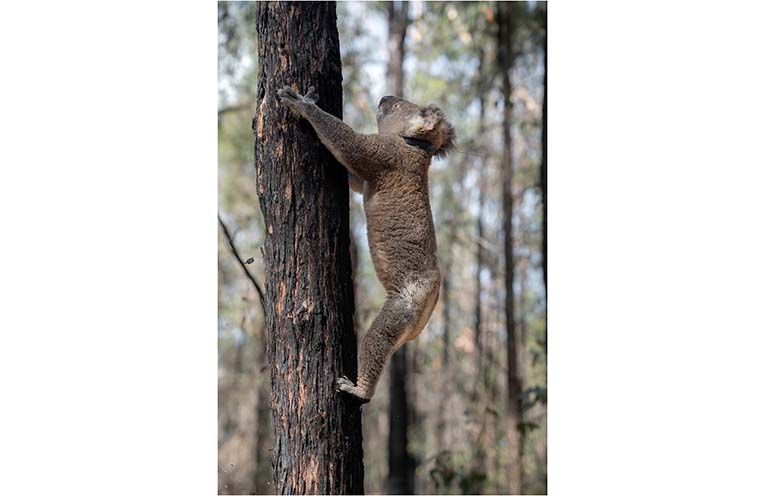
RECENT scientific research shows that selective native forest logging has had no effect on koala populations, according to State Member for Oxley Michael Kemp.
Mr Kemp spoke to NOTA about footage recently released of Dr Brad Law of the Department of Primary Industries discussing his findings in relation to koalas and logging.
 Advertise with News of The Area today.
Advertise with News of The Area today.It’s worth it for your business.
Message us.
Phone us – (02) 4981 8882.
Email us – media@newsofthearea.com.au
The video was published by Timber NSW, the representative organisation of the timber and forest products industry in NSW, and “brought to you” by the Dorney Group, who operate sawmills.
NOTA contacted Dr Law regarding the results of his ongoing research, some of which were previously reported on by various agencies including the ABC in 2021 to the fury of environmental groups who called the findings “dangerous propaganda”.
The studies were funded in part via the NSW Koala Strategy and also the Department of Primary Industries and Regional Development (DPIRD), with results peer-reviewed before being published in various science journals over several years as data was collected, Dr Law told NOTA.
“Published papers of ours have shown firstly that there is no effect of past logging on koala occupancy spread across 171 sites in north-east NSW,” he said.
“Continued monitoring of these sites has demonstrated a stable meta-population of koalas over recent years.
“Secondly, a before-after logging study found no change in koala density after logging.
“Paired National Parks served as controls, with nine sites comprising 25 acoustic recorders each in the study (3,600 ha of forest assessed) with monitoring of these sites ongoing,” he added.
Dr Law also pointed out that a study of GPS-tracked koalas looking at tree use and home ranges after logging, showed koalas were resident and breeding in this forestry landscape where environmental protections were in place, as per the standard regulations set by the Environmental Protection Agency (EPA).
The timber industry is supportive of the research, with Kirsty Parker of M&M Timbers saying she was “just so pleased to hear that the koalas are doing well”.
“Nobody in the industry goes to work saying ‘I’m going to kill some animals today,’” she told NOTA.
In light of such research findings, Mr Kemp believes that a balance between forestry and koala conservation is possible.
“I’m an environmentalist,” Mr Kemp claimed, “but the facts don’t support the narrative that koalas are negatively impacted by logging (carried out under current regulations).
“Ideology should never be used to drive policy,” he said.
“Recent drone surveying backs up Dr Law’s research, identifying over 12,000 koalas living within the assessment area of the Great Koala National Park.
“It’s time they conduct similar surveys in National Parks to definitively prove whether responsible, sustainable forestry impacts koala populations at all,” Mr Kemp asserted.
The research pointed to bushfires and urbanisation as the main threats to koala populations, not forestry, and according to Mr Kemp, reinforces the view that current protections in place during harvesting are effective.
“NSW koala numbers are stronger than activists would have us believe, and sustainable forestry provides much-needed habitat support while mitigating the dangers posed by fire,” Mr Kemp said.
However, a report published in 2023 by Andrew Smith and John Pile, also based on a study of koala numbers and their response to logging, directly challenges Dr Law’s methods and earlier findings.
It indicates that male and female koalas are distributed quite differently within forest habitats.
The researchers argue that koala habitat modelling, mapping and impact assessment based solely on the monitoring of male koala calls, without additional consideration of female distribution and abundance, produces erroneous results that are misleading and unsuitable for koala conservation and management.
By Ned COWIE


